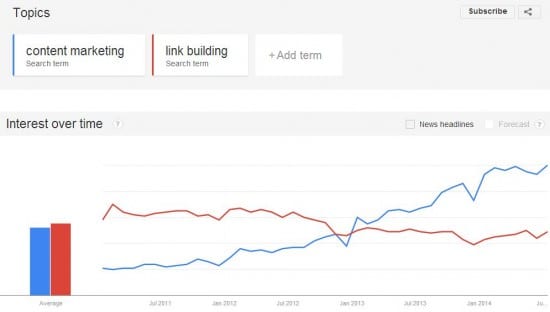Are you at risk of social spamming?

It's well over 10 years since Facebook launched. The behavioural patterns of user groups are now well understood, the advertising platforms are highly developed and the business world across the planet has increasingly become 'social'. Yet the ways in which so many businesses have adopted social media and how they use it for ongoing communication with their customers, is often, in my experience, fundamentally flawed.
While as a marketing community we have learnt so much about social media, when it comes to applying that learning into practice, only comparatively rarely do businesses appear to demonstrate real understanding and consideration of their audience’s requirements.
It is time we re-evaluated our approach as the foundations on which these strategies were built have become eroded. In the following paragraphs, I will pose a few searching questions and outline what I regard as key issues to be addressed differently. While it should be said at the outset that most such issues to be discussed will be especially appropriate for Facebook and Google Plus, they are definitely also to be regarded as takeaways for other network management tactic as well.
Frequency of customer communication
Email and social are often discussed as comparable channels; both allow for a personalised marketing opportunity with a customer or fan base. However, if they are so similar in this respect, why do their applications vary so extensively?
While email campaign planning depends on the audience, segmentation and content, more often than not the recommended frequency of contact would fall between weekly and six-weekly intervals. But with social media platforms such timeframes would be unheard of, and with a recommended frequency of 5-10 per week having recently been suggested to me. For the latter, customer engagements would be something like 500% higher on social than email.
The origin of social spamming
I have purposefully used the word ‘spamming’ here because, if we are not careful as marketers, this is what are social efforts are likely to become seen as by our audiences. As a result, part of the rationale for writing this article is to try to arrest this inevitable growth in negative customer perceptions of our brands.
It is not easy to identify precisely the initial catalysts that have driven the high volume of customer communication through social, but I believe there are at least two:
Reach and viral potential
In the early days of Facebook, posts were seen and interacted with more organically. As a result of such increasing exposure and engagement, pages would be exposing their brands to an ever-widening net of (hopefully like-minded) individuals through viral reach. It was therefore advantageous to post regularly, since you would be reaching a completely new audience with every post, ensuring that if one didn’t succeed, another probably would.
What are we seeing today? I don’t think this really needs to be here as it is explained in the next section 'Algorithms…'
Mimicking user behaviour
A second catalyst is our society’s addiction to social networks. According to Facebook, the average US user now spends 40 minutes a day on the network – 3% of their day! Inevitably, businesses have latched onto this and decided it would be logical for them to mimic it.
Algorithms and behaviour have changed; marketers should do so too
Times have changed, and now Facebook no longer provides the free marketing exposure it used to do. In my estimation, organic reach has fallen by probably as much as 90% over the last 2 years, which means that the opportunity to reach a viral audience without paying for it has become virtual extinct.
Instead, the small reach that might be achieved is likely to be your most engaged audiences; your die-hard fans; or at least they are for a little while longer. But if we continue to badger them over and over again, we risk irritating them to the point where any potential benefit as a by-product is lost.
Larger numbers are not necessarily better
Many marketers have tried to overcome this problem of shrinking reach by increasing the regularity of posting and, by default, this has been likely only to exacerbate the problem stated above.
It is worth bearing in mind that larger numbers are not necessarily better. For example, Facebook is likely to be recording clicks to view images that users then proceed to report and spam or ‘unlike’. In this case, many businesses might well be imagining their posts to have done well in terms of user engagement, when in reality, they may have been despised.
Alternatively, many have seen promoted posts as a fast-track solution to the issue of falling reach. But I would counsel against the idea of paying to reach people just for the sake of it.
All media spending should be considered in relation to the business’s KPIs, goals and ROI. Were they to pause and think about the situation more carefully, many companies that invest money in this way would probably realise that they could achieve more value through investing it in other digital media types.
Learning from experience and other digital channels
My key point, then, is that reflecting carefully on email strategy should help identify shortfalls in social media publishing strategies, but I believe Search Engine Optimisation (SEO) and the evolution of organic search over the last 18 months or so offers another highly valuable way forward.
The demise of volume link building and the rise content marketing
I can be brief on this subject as it is one that has already been much discussed across the industry. But the shift from link-building to content marketing is essentially the same change that social is now beginning to experience.

Previously, quantity was far more important than it is now, and conceptual thinking behind the links acquired tended to be limited. Now, the situation has completely reversed, with large proportions of agency costs being allocated to creativity in order to identify content that can earn those links more effectively.
The entire structure of a link-building programme has completely changed, and what used to occur on a daily or weekly basis may now occur just a few times per year, but be of a better quality and drive better results
For those interested in reading up on their content marketing strategy, or looking for inspiration to take it to the next level, check out this article on winning buy-in for your ideas.
Summary and delivering campaign-led social media strategies
In light of the high level of decline in organic reach it has become increasingly difficult for agencies and in-house teams to justify social media resource and budget. However, by learning important lessons (the next paragraph does this) from email and SEO, we can quickly adapt to the changed nature of the industry.
By allocating less resource to generating high volumes of (often meaningless) content, and focusing our efforts instead on structuring content around larger, better thought-out campaigns that are likely to resonate with our audiences, we should start to see the following benefits:
- Uplift in brand perception.
- Uplift in helpful engagement, leading to reach increase and, indeed, possibly viral reach.
- Opportunities to distribute through other channels and mediums (integration, if I must use a buzzword).
I think the most important ‘takeaway’ here is to recognise that many of us are still seeing ‘social’ as a free bolt-on to our digital marketing output, producing large quantities of uninspiring and sometimes downright poor content just because we think we should. We need to recognise that, by changing tack and thinking more smartly, can achieve much more with less.
 Thanks to Ed Raine for sharing his thoughts and opinions in this blog post. Ed is Digital Strategist at Fusion Unlimited, the digital marketing division of Principles Communications. You can connect with him on Twitter or LinkedIn.
Thanks to Ed Raine for sharing his thoughts and opinions in this blog post. Ed is Digital Strategist at Fusion Unlimited, the digital marketing division of Principles Communications. You can connect with him on Twitter or LinkedIn.





 Thanks to Ed Raine for sharing his thoughts and opinions in this blog post. Ed is Digital Strategist at
Thanks to Ed Raine for sharing his thoughts and opinions in this blog post. Ed is Digital Strategist at 


